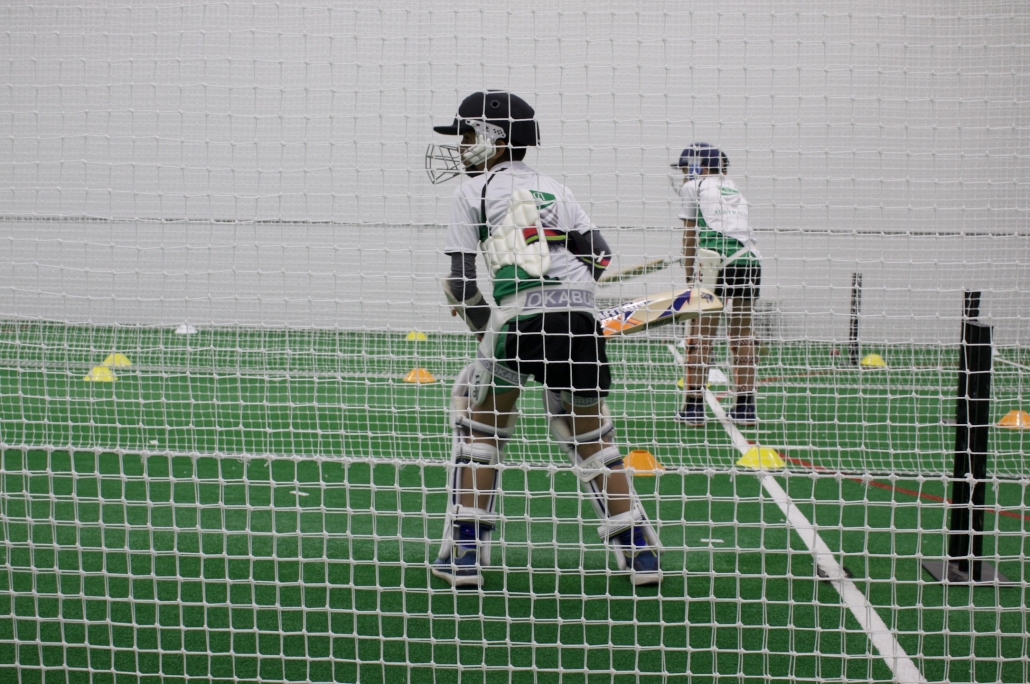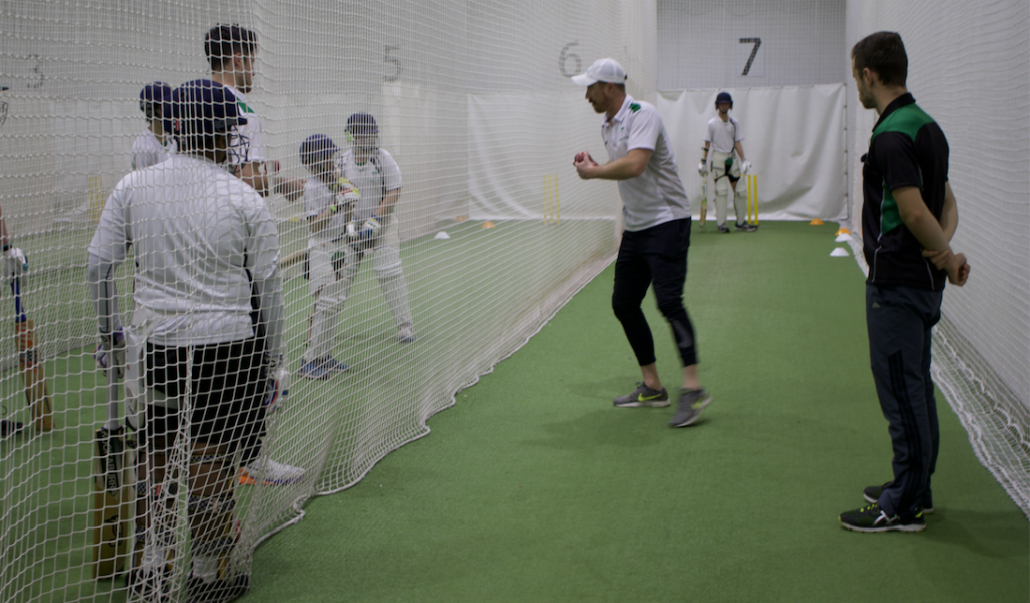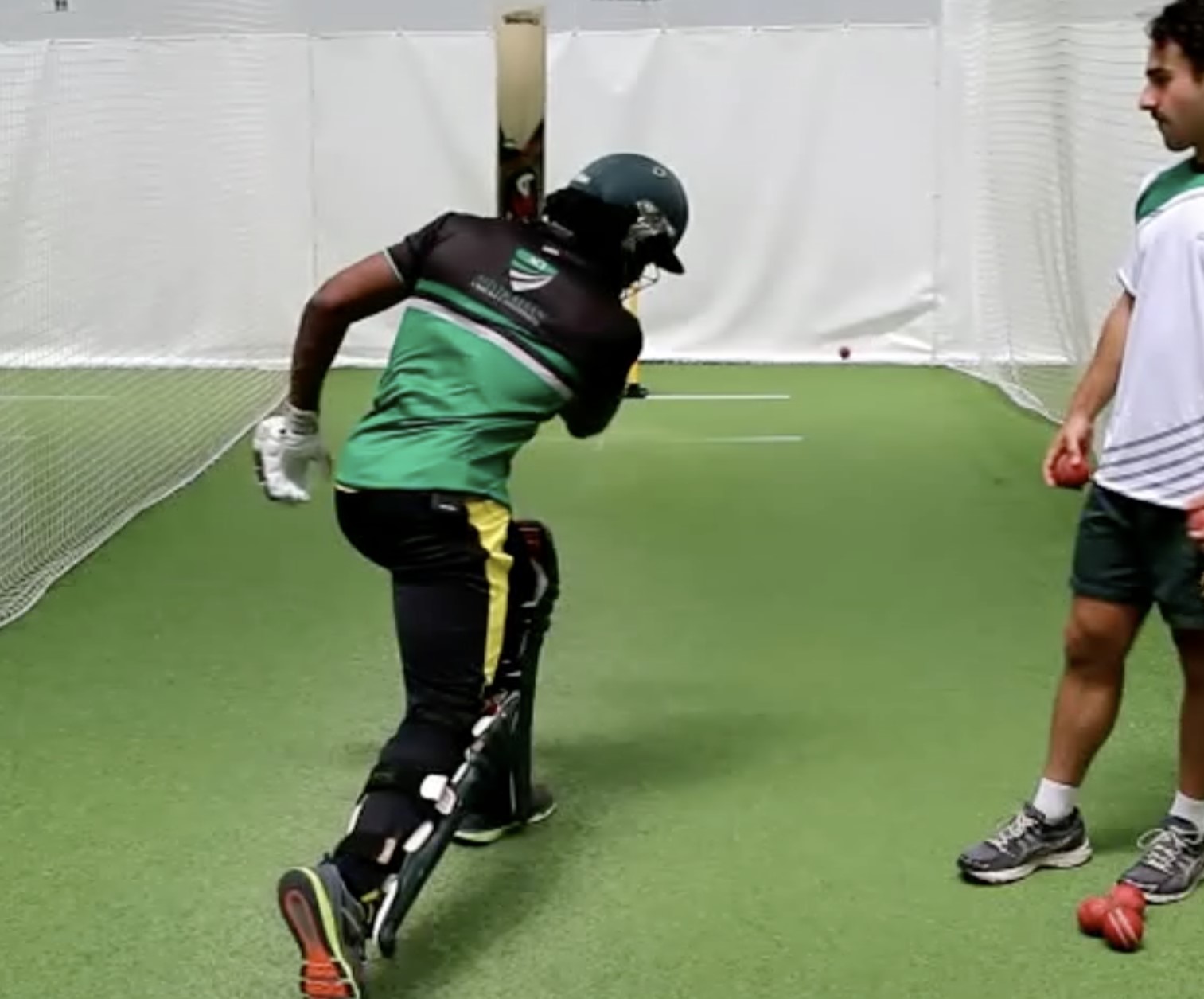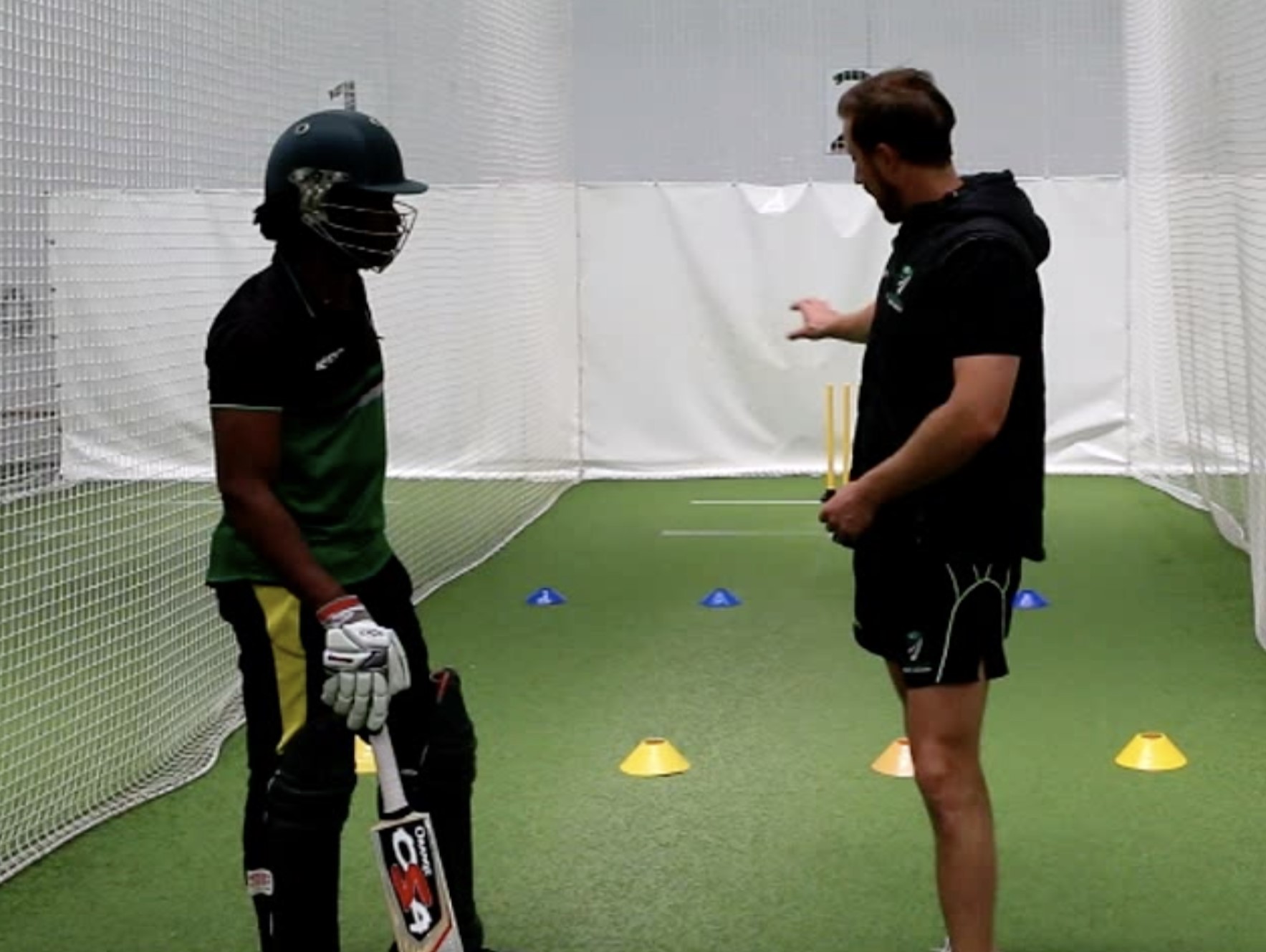I’m sure you’ve got a story about ‘that day’ you got out in the most unbelievable way….
Most people know there are 10 ways you can be dismissed in cricket and you’re probably aware that within those 10 modes of dismissals there are hundreds of different balls and scenarios that can occur to get you out. Some more common, some weird and wacky.
I’ve seen the ball catch under the thigh pad and wrap around the back of a player bowling them. I’ve seen players crunch a ball and get caught in some weird crevice of short leg. I’ve seen players get run out off the bowlers finger tips without facing a ball. I’ve even seen a player get timed out during a batting collapse because they were off getting a toasted sandwich at the canteen and couldn’t get padded up in time.
But that’s not what this article is about…
Here at ACI, we’ve coached thousands of young players, played every level of cricket from club to state to international and have been asked thousands of questions through email and social media and a lot of the problems players are having with their batting boil down to 3 common dismissals and a handful of technical mistakes.
In this article, I’m going to talk about the 3 most common dismissals (which you probably already have a fair idea of) and I’m going to point out the technical mistakes most batsman are making to cause those dismissals and how to fix them.
Feel free to skip straight to the one that applies to you or read them all.
Hopefully it can help you if you’re constantly getting dismissed in one or more of these ways. Or if you’re a father or coach looking to improve your knowledge and ability to help your child or players improve.
*Note* We’re also going to follow this article up with a video blog post showing you specific batting drills. So keep your eye out for that.
Common Dismissal #1: LBW Playing Across The Line To A Ball Too Straight
I’m sure you’ve been dismissed LBW before, and may still continue to do so, and thought “why did I play across the line to that?”…
Now, I wanted to separate this from all LBW’s because that is too broad. There are times when you get out LBW to a good ball playing straight. I want to talk specifically about the times you’ve gotten out LBW playing across the line that is (obviously) too straight to be doing so, and point out the root technical issues that cause you to play across the line. So for this example I’m talking about a ball that is on middle/leg stump line.
Ok, let me break it down.
Playing across the line to a straight ball is caused by 3 technical mistakes, each one caused by the other which I’ll explain....
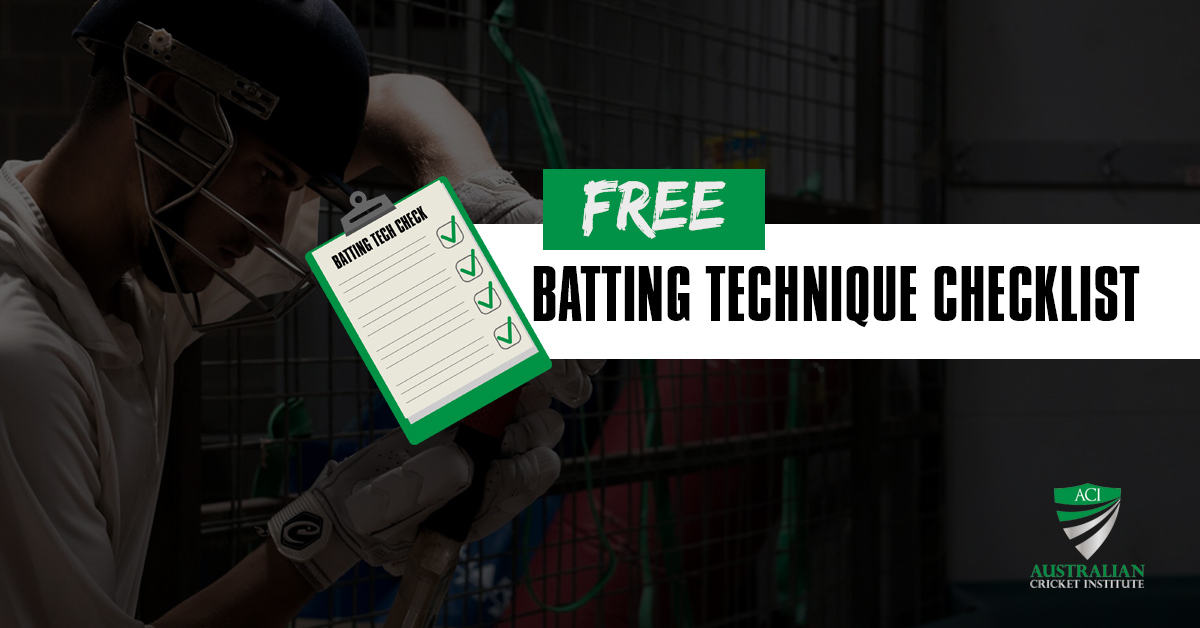
Click the image to download our free batting technique checklist
Technical Mistake #1: Your hands are going too far away from your body in your back lift.
Every single skill in cricket involves balance, batting, bowling, fielding and wicket keeping. The aim is to keep everything centered and be as balanced as you can when you’re executing the skill.
The first shift in a batsman's weight and therefore balance is their hands. I’m sure you’ve heard a coach say “keep your hands in tight”. But why?…
As soon as your hands move away from your body, usually in your back lift, your weight begins to move off center towards the offside.
Notice in the images below, the picture on the left is an example of the mistake I’m talking about. The picture on the right is the correct back lift.

Once your hands get too far away from your body, mistake #2 happens.
Technical Mistake #2: Your head falling over to the off side.
Once your hands move away from your body, the first thing to follow, just like a building or a tree falling, is the top…your head.
Picture on the left is of my head falling over; picture on the right is where your head should be.

This causes more trouble with your balance to the point where your natural reaction and only option is…
Technical Mistake #3: Planting your front foot on off stump too early.
This is the final piece of the puzzle and your only option to stop yourself form falling over. As soon as you do this…you’re in a great position for a cover drive…not so much a straight ball.
Here’s the wrong way…

Here’s the right way…

Here’s a little exercise…
Jump up where you are, if you have a bat near you grab it, if not your hands are fine.
Now I want you to set up in your stance, and for the point of the exercise, push your hands straight out away from your body with a bit of force (you’ll need more force if you don’t have a bat).
I want you to notice firstly the shift in your balance. Secondly where your head goes and finally the natural reaction which is, if you’ve done it correctly, a small step forward and across to stop yourself falling over.
Now the end result…
Imagine a ball coming at you on middle/leg stump. From that position, your weight is on your front foot and it’s very hard to get out of that position now, especially if the bowler is decent pace. Your front pad is in the way meaning your only option to hit the ball is to play around your front pad and across the line.
You might get away with it for a while but it’s high risk and your days are numbered.
How to fix it…
- Keep your hands in tight - Imagine rocking a baby and brushing your hands on your hips/waist. That’s the line you want your hands going on in your back lift.
- Always think “push your head to the ball” - this is nearly the only thing you need to be telling yourself as a batsman. If you lead with your head, your feet follow.
- Don’t commit to the front foot too early - If you nail the first two, you’re going to be a lot more balanced and this will become a lot easier.
Common Dismissal #2: Knicking a ball that is outside off stump.
Every single player has and will continue to get out knicking the ball…
But the one that really hurts is when you get out knicking a ball half-heartedly playing at a ball that you don’t really need to play at. The bowler hasn’t got you out, you’ve got yourself out and you walk off the ground kicking yourself.
This one’s not quite as complex as #1 but here’s how and why that happens…
Technical Mistake #1: Planting your front foot straight down the wicket (and too early).
Similarly to what I spoke about earlier, once you plant your front foot and your weight is committed, it’s very difficult (near impossible) to move your front foot again. So you’re pretty much stuck with your foot straight down the wicket when you need to be getting your foot to the pitch of the ball, outside off stump.
Picture on the left is the wrong way, picture on the right is the right way…

From there it becomes more of a judgment error and you…
Technical Mistake #2: Play away from your body with your hands outside the line of your head.
Once you find yourself caught in this position, if the ball is outside off stump, you’re better off letting the ball go…
But as you know, you’ve got a split second to make a decision and often it’s instinct that causes you to play at the ball. In this position your head simply cannot be in line with the ball and you have to throw your hands at the ball away from your body.
Your percentages of hitting the ball drop massively once it’s outside your eye line, it’s just easier to track the line of the ball when it’s in line with your eyes. Simple as that.
Wrong / Right

Now there are exceptions, great players, who you may have seen with minimal footwork and great hands that play away from their body, but they’re exactly that…exceptions. The majority of us aren’t the exception, so we’re going to have a lot more success playing the percentages.
Now that being said, how do you fix it?
This one’s a bit harder to self-identify. Sometimes you’re not actually aware that your front foot is going straight down the wicket. I’ve often been batting in the nets and felt like I was moving my foot across until a teammate or coach points out that I’m not. So…
-
- Firstly, get someone to watch you and even video you so that you can see where your front foot is going.
- Practice delaying your forward press until the ball is released so not to commit too early.
- Always think “push your head to the ball” - as I said before, if you lead with your head your feet will follow
.
Ok, to the last common dismissal…
Common Dismissal #3: Getting caught in front of the wicket.
In your head you’re trying to play the perfect drive along the ground past mid-off. As soon as you hit it you curse yourself in your head and know you’re in trouble. Then the ball seems to go in slo-mo and you’re pleading to yourself for the fielder to shell it. But they don’t.
Here’s why you might often find yourself back in the sheds after hitting the ball chest high to a fielder…
Technical Mistake #1: Your weight is back (or just not forward and over the ball enough).
This generally happens when you’re a bit tentative (we’ve all been there) about the pace of the bowler you’re facing. In the back of your head you’re waiting for the short ball so you instinctively hang back a little bit and find yourself caught with your weight back.
You should always have the intent to go forward (don’t get that confused with planting your front foot too early).
It’s a lot easier to push back off the front foot than it is to push forward off the back foot.
When your weight is back and not forward over the ball, it will cause you to make contact with the ball out in front of your body with your bat angled slightly up, causing you to hit it in the air.
Wrong / Right

Technical Mistake #2: Using too much bottom hand.
This can cause you to hit the ball in the air whether your weight it forward or back, but it’s often a combination of both your weight being back and too much bottom hand.
The simple reason: If you use too much bottom hand the bottom half of your bat will go through faster than the top half of your bat which will then be angled up when you make contact with the ball.
For the most part, if you’re trying to hit the ball along the ground your top hand should be dominant and your bottom hand should just act as a guide meaning a strong grip with your top hand and a light grip with your bottom hand, usually just your thumb and forefinger (pointer).
Often the cause of too much bottom hand is a strong bottom hand grip.
For those that don’t know, if you’re a right hand batsman your left hand is your top hand, if you’re a left hand batsman, your right hand is your top hand.
Wrong / Right

Technical Mistake #3: Playing the ball too early
This one is pretty self-explanatory. If you swing through your shot too early, you’re going to make contact with the ball in front of your body with your bat angled up. The images above are relevant.
You’ve heard it before…
Play the ball as late as you can and hit it under your eyes.
Now how to fix…
- Be aware of your grip at training - make sure you’re top hand is dominant.
- Do some basic drop drills using only your top hand to get into a good habit.
- Keep your front elbow up - if you keep your elbow up, it’s a lot harder to use too much bottom hand, as soon as your elbow drops you become more reliant on your bottom hand.
- Hit the ball as late as you can and under your eyes.
There you have it!
An in depth breakdown of the small technical mistakes that have a domino effect on each other and cause the 3 most common dismissals.
If you’re a player - I hope this helps you get to the root cause of that annoying way you KEEP getting out.
If you’re a parent of a player - I hope this guide helps with your ability to give your child advice and gives you something to work on in the nets with them.
If you’re a coach - I hope you’ve picked up something new that you can take back to your team.
If you would like our free batting technique checklist, click the image below to download it.


Author: Nick Fitzpatrick
Australian Cricket Institute: Level 2 Coach
